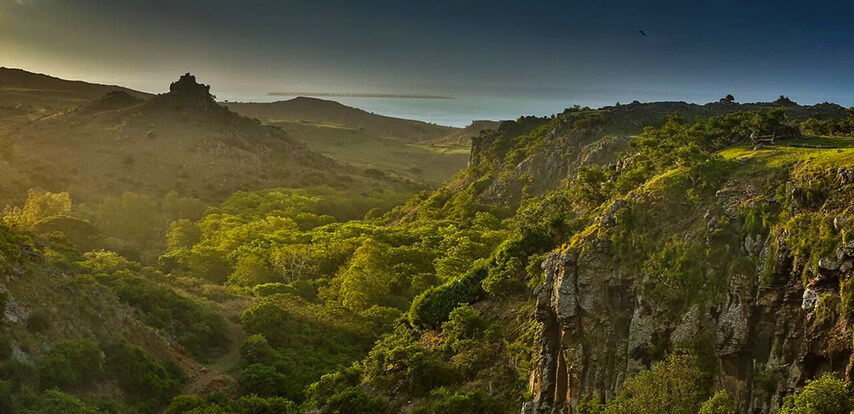What Makes Rodrigues the Most Fascinating Island in the Mascarene?
Typically hilly and mountainous, Rodrigues is among one of the Mascarene Islands, situated in the south western part of the Indian Ocean, besides Mauritius and Réunion.
The collective title is derived from the Portuguese navigator Pedro Mascarenhas, who first visited these island in the early sixteenth century. The Mascarene Islands share a common geologic origin in the volcanism of the Réunion hotspot beneath the Mascarene Plateau and form a distinct eco-region with a unique flora and fauna.

Rodrigues is believed to be created in the last two million years, before its sister island. It is 18 km long, 8 km wide, a surface area of 108 km² which makes it the smallest of the Mascarene archipelago.

With a succession of valleys plunging to the 300 km² lagoon, the island brings an exhilarating feeling of weightlessness whilst meandering through steep escarpments and terraced fields towards its 80-km coastline.
One of the most characteristic features of this enthralling island, is its exceptional relief such as the limestone at Plaine Corail. You can also visit some caves with impressive stalagmite and stalactite formations.
The interior of the island is constituted of a chain of mountains which is 398 metres at its highest point, the Mount Limon, and which crosses nearly the whole of the island from East to West. Some quite steep ravine emerge into emerald coloured bays or impressive looking cliffs.
There are some 20 coral islets bearing evocative names as Gombrani, L’Hermitage and Ile aux Chats nestle in the lagoon, mainly towards the south and north-east. Some of them, namely Ile aux Cocos and Ile aux Sables, are renowned bird sanctuaries.
Some must see sites at Rodrigues Island:
- Port Mathurin, the pocket capital. Discreet and calm, it shelters the unique harbour of the island.
- Caverne Patate, with a length of 1057 metres (accessible area: about 600 metres), it goes down 26 metres under the earth. It is decorated with stalagmites and stalactites as well as other original shapes cut in the coral rock.
- Rivière Banane, small agricultural village lost in a valley. There, you can see numerous plantations and two large wild beaches separated by a peak formed in basaltic rock.
- Ile aux Cocos, a long strip of white sand covered with casuarina trees, is a nature reserve. It provides shelter to many sea birds.
- Hermitage Island, with its jagged and rocky relief as well as its tiny heavenly beach, is a sheer invitation to play at Robinson Crusoe.
- Catherine Island, rocky and wild, offers a magnificent view on the western coast from its peak. It acts as a shelter for the fishermen who come to the island at times to rest.
- Plaine Mapou proposes a rustic landscape, decorated with a bay reflecting magnificent shades (Topaze Bay). Completely isolated, the feeling of being at the end of the world is strongly emphasized there.
- There’s the whole coastline to explore on foot! Numerous paths that enable a complete tour cross the island. In particular, the uneven coast from Pointe Coton to Gravier, which reveals deserted beaches and creeks of an indescribable beauty: Saint-François, Anse Bouteille, Anse Philibert, Trou d’Argent.






















































